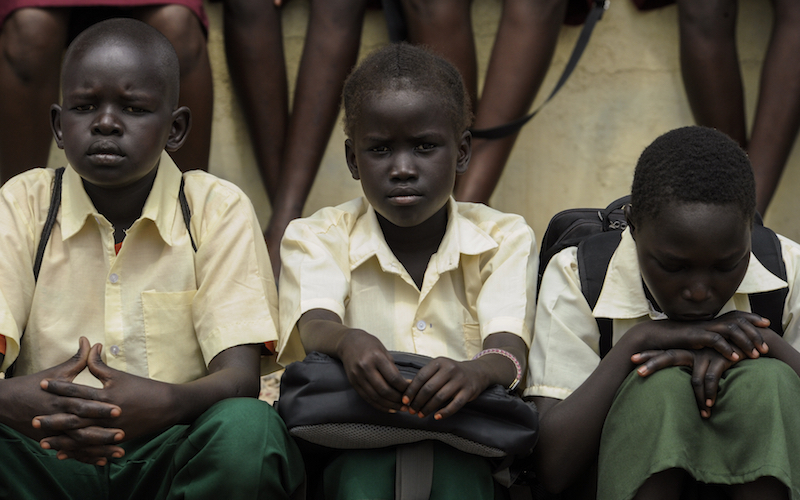
‘A Betrayal of Promise’: The South Sudan Conflict
To understand the depth of South Sudan conflict, its history, which led to the formation of this independent nation, must be understood. Sudan gained its independence in 1956. However, since that time southern leaders found the independence agreements quite “irrespective” as the agreements were not benefiting the interests of the southerners.
The southerners wanted sovereignty and rights for the southern ethnic and cultural groups, ranging from differences of religion to language. These “discrepancies” led to frequent and intense civil wars between Sudan and the southern forces. The first conflict lasted for over twenty years (1955 to 1972). The conflict came to an end only when the Sudanese government granted “autonomy” to the southerners. However this autonomy came with an expiration date. A few weeks before the “ending” of this autonomy, civil war arose again in 1983 and lasted for more than twenty years, finally ending in 2005 and the Comprehensive Peace Agreement was signed between the two that guaranteed regional autonomy and representation. In total, more than 2 million died (both civilian and military) while countless were displaced during the conflict. In 2011, the 10 southern most states offered a referendum for southern independence, which passed by an astonishing 99%. And thus South Sudan was formed.
The new Sudanese government came under the leadership of President Salva Kiir Mayardit (an ethnic Dinka) along with the Vice President Riek Machar (an ethnic Nuer) both of whom were former freedom fighters. In the beginning there was stability and this new nation seemed to develop smoothly.
Controlling over 50% of the Sudan’s oil fields along with huge investment benefits from the US and China, South Sudan developed quickly. But talks on the sharing of oil revenues with Sudan failed abruptly and in 2012, South Sudan was forced to halt oil production, stalling economic growth. There were also conflicts on the border, as both parties failed to agree on the legitimate sharing of borders. Renewed fighting began in December 2013 when a power struggle between the president and his deputy led to the deputy’s dismissal which further resulted in mass violent outbreaks between government troops and the rebels. South Sudan after two years of relative economic stability and growth fell into civil war.
The most important issue today is the composition of soldiers on both sides. South Sudan is a nation with many diverse ethnic groups each comprising of loyal supporters. Ethnic issues are compounded by the fact that the President and the Deputy are from two separate ethnic groups. It is not incorrect to say that this civil war involved “ethnic violence.” Militants on both sides have violated human rights especially when people were targeted on the basis of their religion. Most of the casualties today are civilians who get caught in the politics and become victims of ethnic violence in their own country.
In an effort to end the conflict, multiple ceasefires have been signed but all were quickly violated in a very short period of time. One such example is the ceasefire agreement of 24th January 2014; the agreement was violated the next day when the government troops advanced towards rebel positions. A total of 1.5 million people have been displaced and the conflict has disrupted most of the agricultural economy. Many refugees are forced to live in unspeakable and dangerous conditions. Due to the disruption of planting season, famine is in play, further deteriorating the plight of the refugees. Even those refugees who are able to make it to UN refugee camps are not safe as both the sides do not respect UN authority. For example, a group of militants “pretending” to be peacekeepers entered a refugee camps and opened fire on civilians.
The international community through the UN has made efforts to bring ceasefire agreements to the table, but these efforts have been far from successful. The beginnings of the first two months were monitored closely by the UN peacekeepers, which drew heavy criticism on their “peacekeeping” skills, as atrocities were committed as they “watched.” It was another example of their “sit back and relax” strategy that is reminiscent of the Rwandan genocide. Immediately after the civilian killings in Sudan, a UN official reported the mass atrocities on both sides. Due to their inaction, international assistance organizations ranging from Doctors without Borders to Amnesty International have criticized the UN peacekeeping operation for their “ineffectiveness.”
On May 28th, 2014 the Security Council unanimously passed a resolution and focussed their approach on safeguarding civilian population along with rehabilitation in other non conflict zones. However, with a few UN peacekeepers and staff on the ground, the situation turned into chaos as more civilians flooded the refugee camps. Ceasefire agreements were made to ensure no “destruction,” however, no ceasefire agreement lasted more than 24 hours.
Many security analysts fear that the situation will soon turn into a “frozen” conflict, while many say otherwise. It is now up to individual nations to assist. UN Security Council approved a deployment of 14,000 troops on the ground in addition to peacekeeping staff members. Chinese troops arrived in January this year, and the US promises harsh economic sanctions. In the end, it is the civilian who understands and suffers more.
